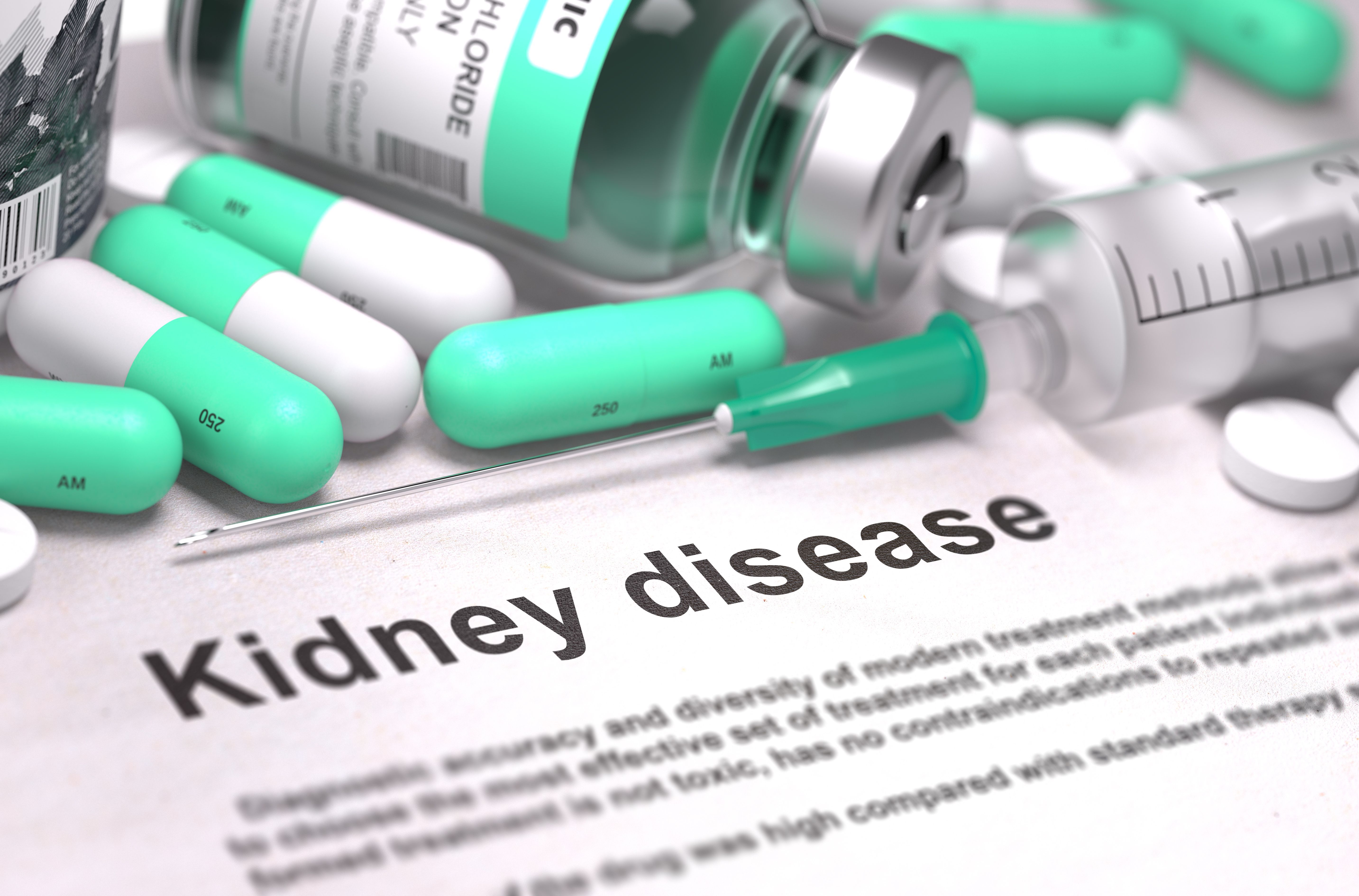Corticosteroids Induce Remission in Patients With IgA Nephropathy, Moderate Proteinuria
Patients with IgAN and urine protein levels of 0.75–3.5 g/d treated with corticosteroids exhibited significantly greater overall and complete remission rates compared to those who received supportive care.
Credit: Fotolia

Corticosteroid therapy may reduce protein excretion levels and preserve renal function in patients with immunoglobulin A nephropathy (IgAN) at a greater rate than supportive care, according to findings from a single-center retrospective study.
Although corticosteroid therapy proved to be beneficial for achieving clinical response and remission in patients with IgAN and moderate proteinuria, individuals receiving oral corticosteroid therapy and corticosteroid pulse therapy experienced a non-significant but numerically greater amount of adverse events.1
“Although corticosteroids are currently the most widely used immunosuppressant in IgAN therapy, their role remains debatable,” wrote Yu Wang, of the department of nephrology at Sun Yat-sen University in China, and colleagues.1
IgAN occurs when too much IgA is deposited in the kidneys, building up inside the small blood vessels and subsequently causing inflammation of and damage to the glomeruli. Treatment seeks to relieve symptoms and prevent or delay chronic renal failure, as no cure currently exists. Corticosteroids are sometimes used to treat IgAN, but in the absence of a standardized treatment protocol, their use in this patient population is widely debated.2,3
To examine the use of corticosteroid therapy, investigators conducted a single-center, retrospective analysis of patients with biopsy-confirmed IgAN between May 2013 and October 2020 at The First Hospital of Sun Yat-sen University. For inclusion, patients were required to be ≥ 14 years of age with 24 h urinary protein level between 0.75-3.5 g, estimated glomerular filtration (eGFR) ≥15 mL/min/1.73 m2, no corticosteroid or immunosuppressive therapy before renal biopsy, prior treatment and pathological data integrity, and have well-documented clinical and pathological data with ≥ 3 months of follow-up data.1
A total of 336 patients were enrolled in the study and divided into 2 groups based on receipt of corticosteroids (n = 192), including oral corticosteroid therapy and corticosteroid pulse therapy, or supportive care (n = 144), including oral renin‐angiotensin‐system blocker (RASB) medication or other symptomatic supportive therapy.1
The study’s endpoint was a 40% reduction in eGFR, the onset of end-stage renal disease (ESRD), or renal disease-related death. Investigators also conducted an efficacy evaluation based on the patient's urine protein level and renal function at the time of the last follow-up visit. They defined complete remission as proteinuria < 0.4 g/d with stable renal function, partial remission as a decline in proteinuria by > 50% and remaining over 0.4 g/d with stable renal function, and no response as failure to meet any of the criteria.1
Using data obtained from electronic medical records and telephone follow-up, investigators determined there were no significant differences between the groups in terms of sex, hypertension, hemoglobin, body mass index, mean arterial pressure, creatinine, uric acid, or triglycerides. Of note, patients treated with corticosteroids had worse clinical and histopathological features, including lower eGFR, increased urinary protein level, lower serum albumin, lower rates of taking RASBs, and severe renal pathologic alterations.1
Treatment with corticosteroid therapy led to greater rates of complete remission than supportive care (34.2% vs 19.4%; P = .012). After adjusting for confounding variables, corticosteroid therapy was significantly associated with increased clinical response and remission (Odds ratio [OR], 2.18; 95% Confidence interval [CI], 1.21–3.90; P = .009).1
Additionally, investigators called attention to the potential therapeutic effect of corticosteroids for alleviating the deterioration of renal function, noting significantly lower median annual rates of deterioration in the corticosteroid group (0.68 mL/min/1.73 m2) compared to the supportive care group (3.46 mL/min/1.73 m2)(P = .003).1
Using propensity score matching, investigators paired 95 patients who received corticosteroid therapy with 95 patients who received supportive care. Although the median annual rate of renal function deterioration in the corticosteroid group (1.4 mL/min/1.73 m2) was numerically lower than that in the supportive care group (3.3 mL/min/1.73 m2), this difference did not reach statistical significance (P = .076). Corticosteroids were more effective in reducing proteinuria and patients in this group exhibited greater overall and complete remission rates.1
Before propensity score matching, 88 patients in the supportive care group and 158 patients in the corticosteroid group had complete adverse event data, dropping to 71 and 80, respectively, after propensity score matching. Among these patients, 27 treated with corticosteroids and no patients treated with supportive care experienced > 1 adverse event, but the occurrence of serious adverse events between the groups was not found to be statistically significantly different.1
Limitations of this study included its retrospective and monocentric design, also causing ethnic homogeneity. Investigators also called attention to the short length of follow-up, small sample size, and lack of data on the use of SGLT2 inhibitors and antihypertensive drugs.1
“IgAN patients who received corticosteroid treatment exhibited significantly higher overall and complete remission rates than those who received supportive care. The study indicates corticosteroid therapy may benefit IgAN patients with urine protein levels of 0.75–3.5 g/d by reducing proteinuria and protecting renal function,” investigators concluded.1
References:
- Wang Y, Yu J, Jiang Y, et al. Corticosteroid in IgA nephropathy with moderate proteinuria: A retrospective cohort study. Nephrology. 2024;1‐10. doi:10.1111/nep.14269
- Penn Medicine. What is IgA Nephropathy (Berger's Disease)? July 27, 2021. Accessed January 18, 2024. https://www.pennmedicine.org/for-patients-and-visitors/patient-information/conditions-treated-a-to-z/bergers-disease-iga-nephropathy
- National Institutes of Health. IgA Nephropathy. Kidney Disease. September 2022. Accessed January 18, 2024. https://www.niddk.nih.gov/health-information/kidney-disease/iga-nephropathy